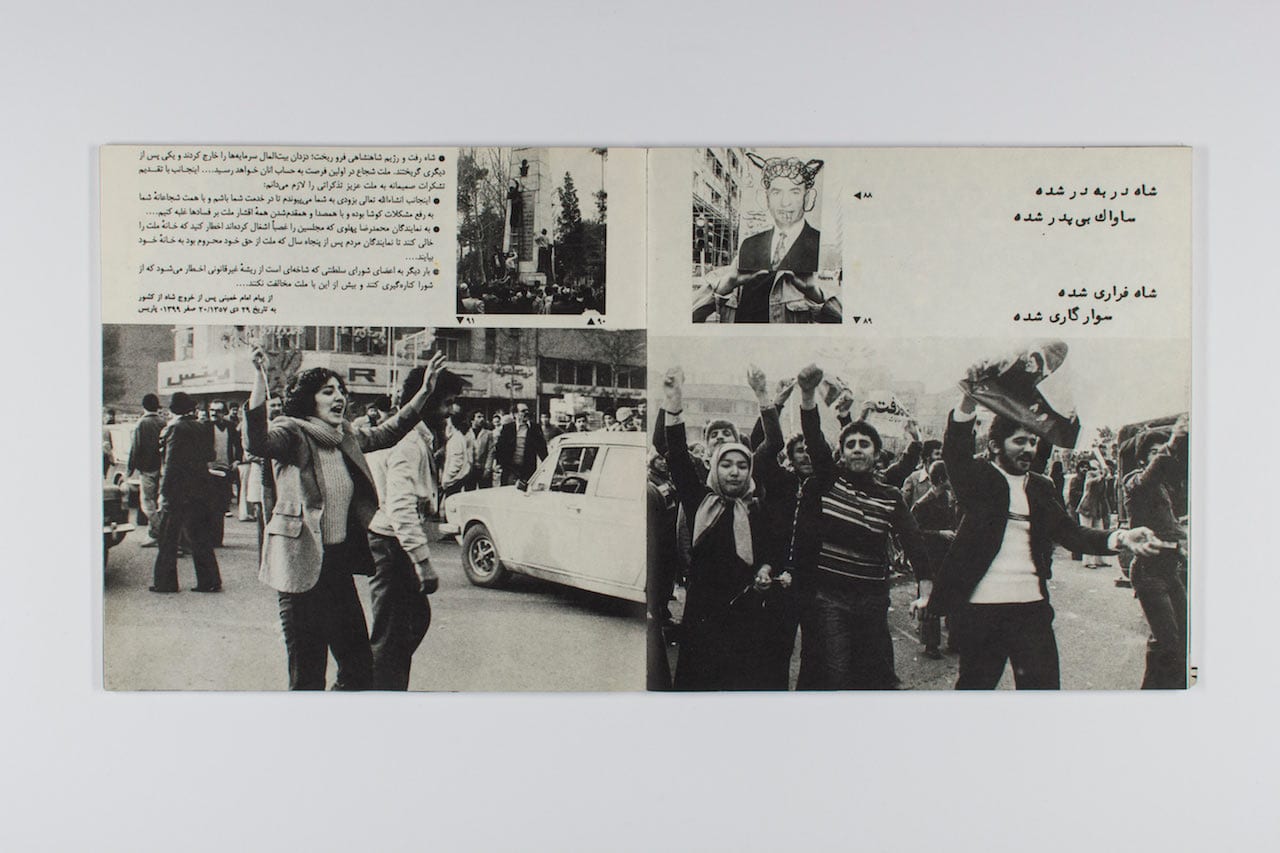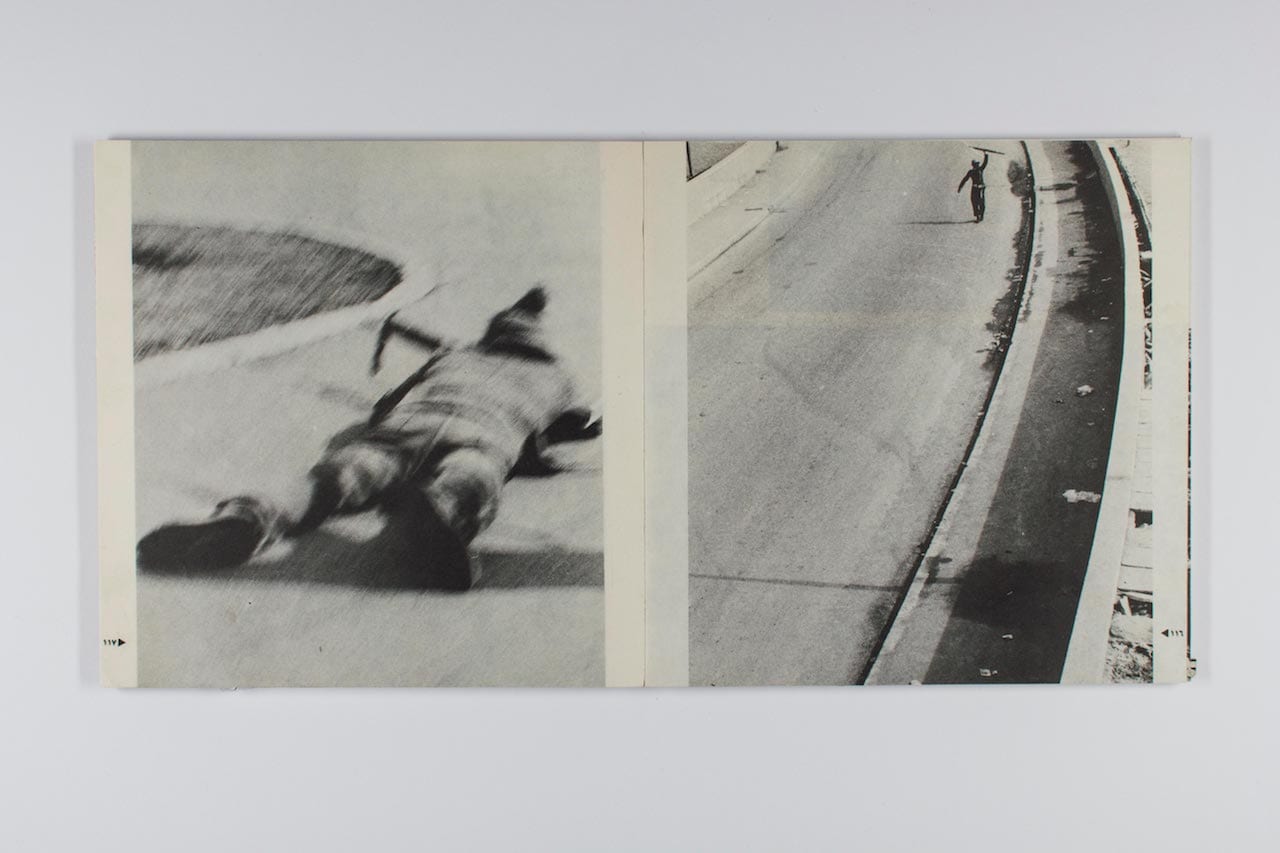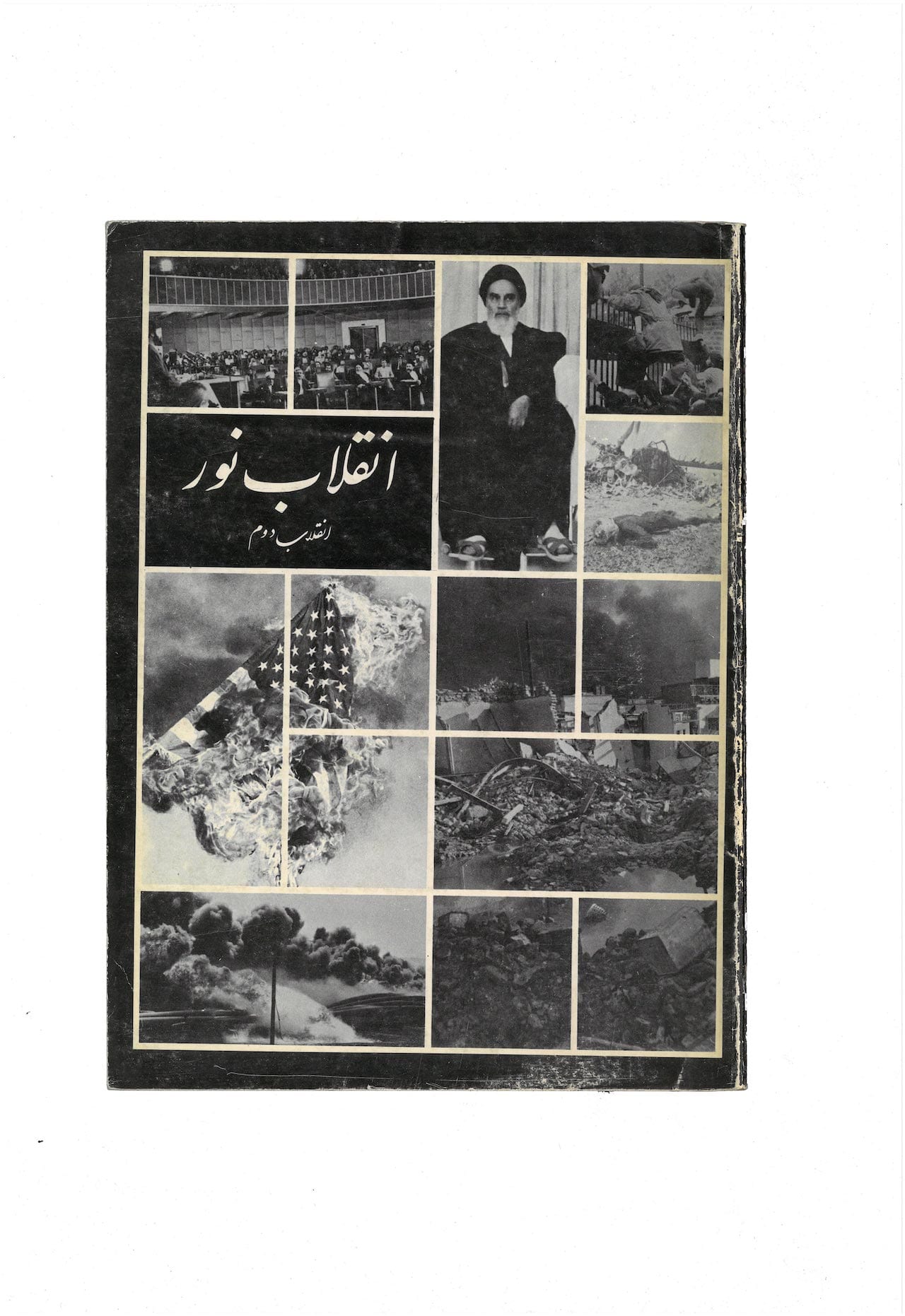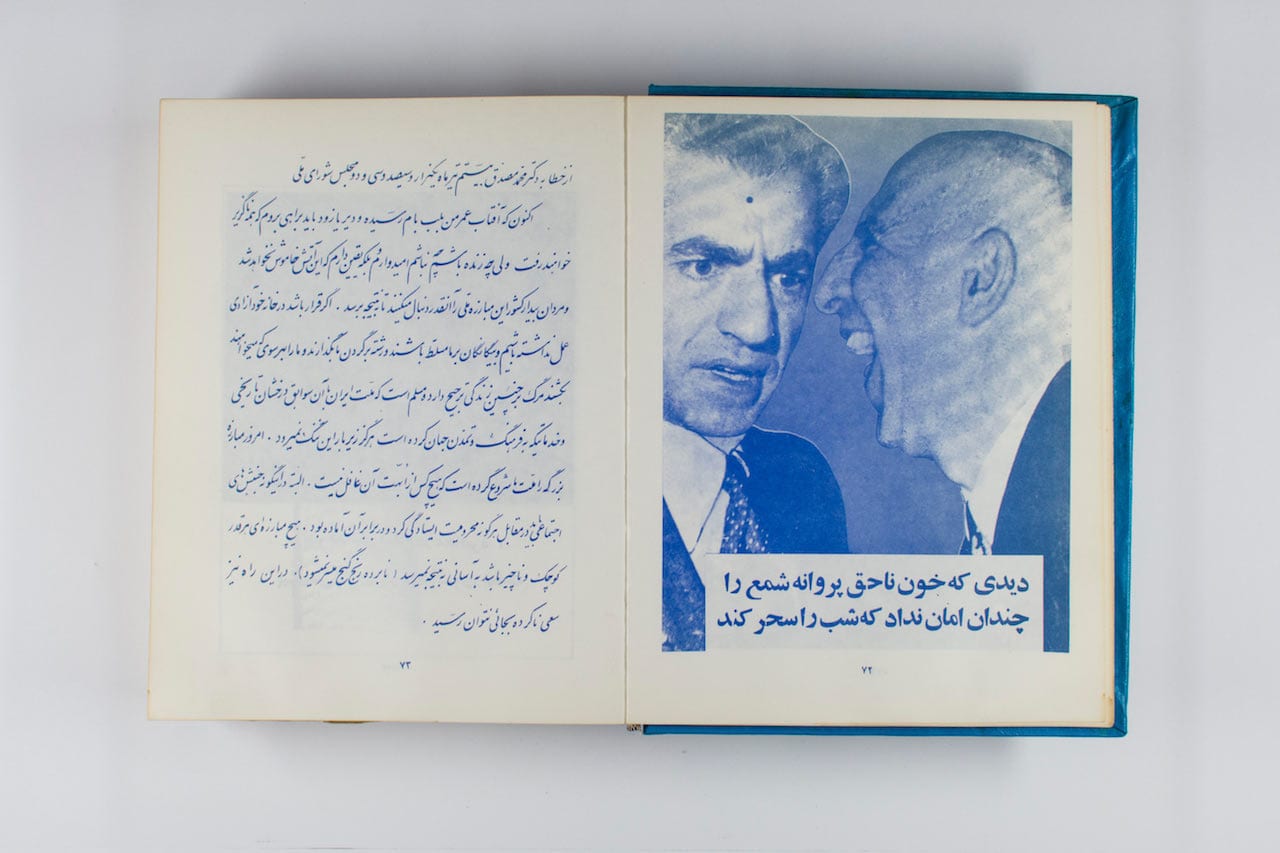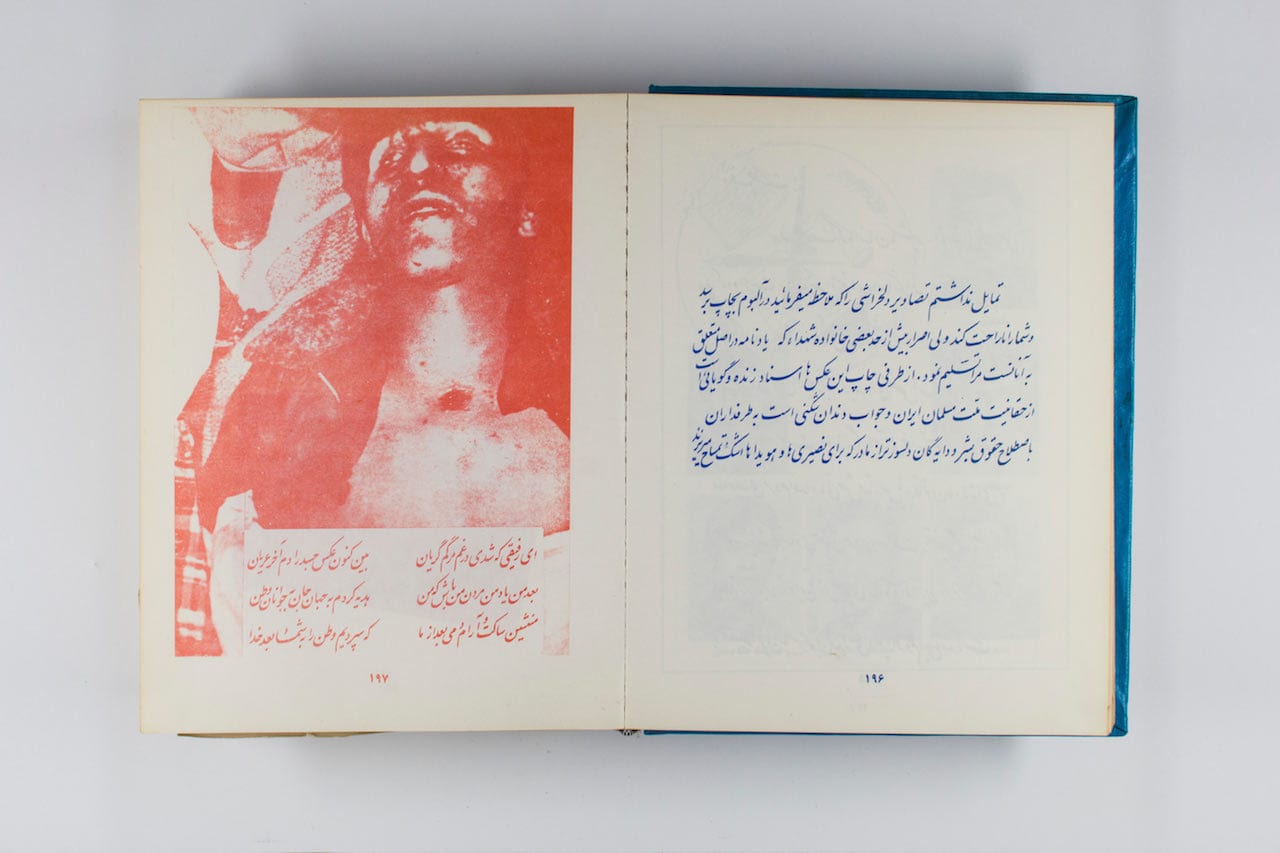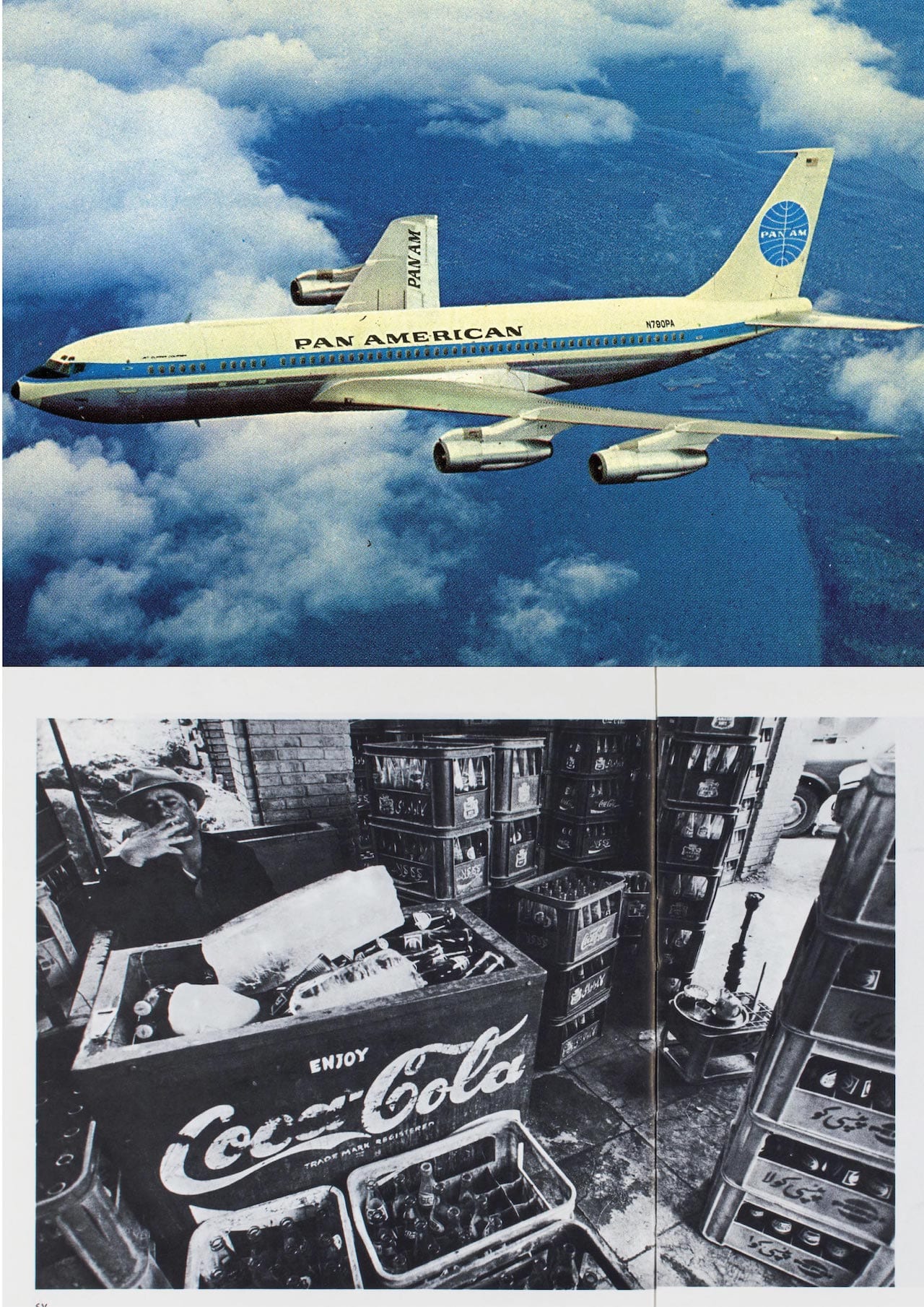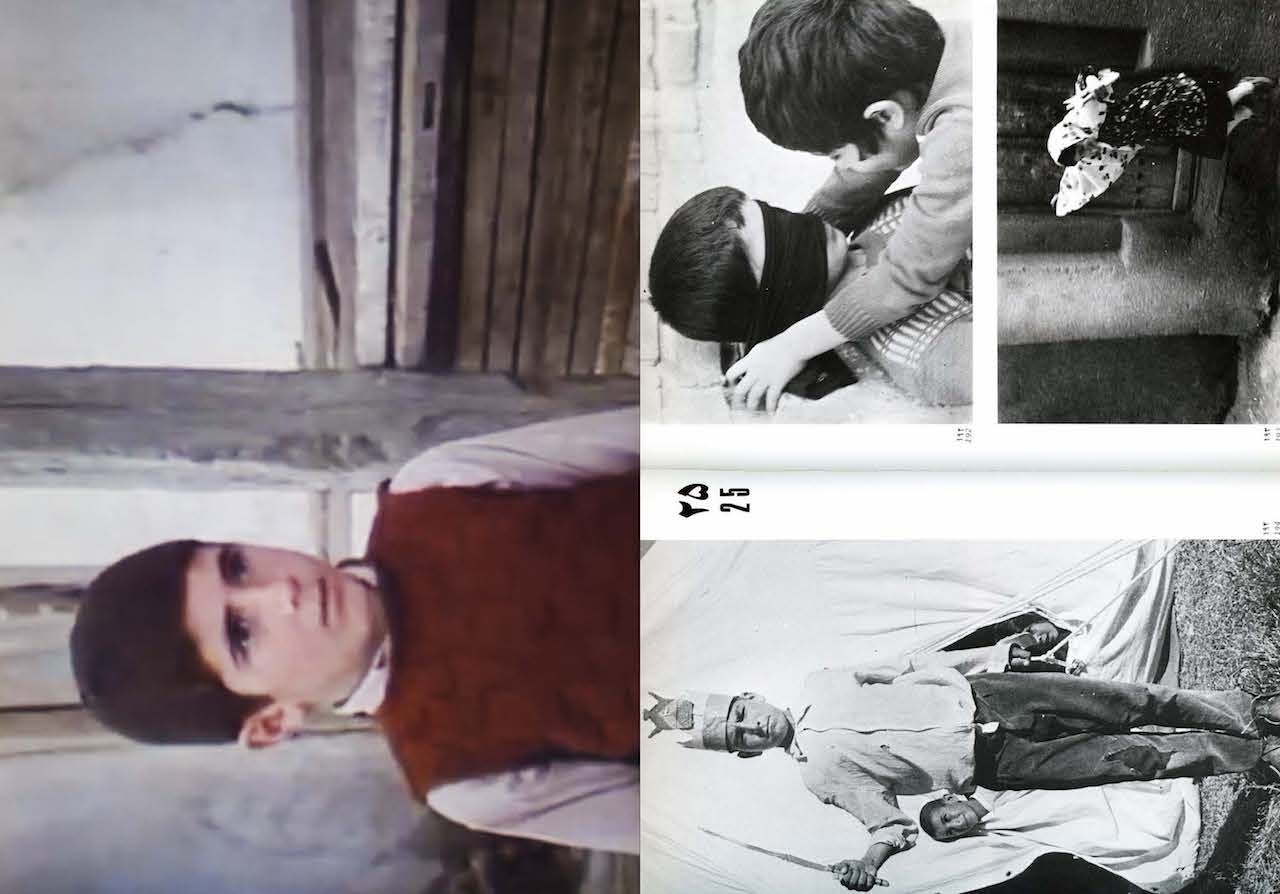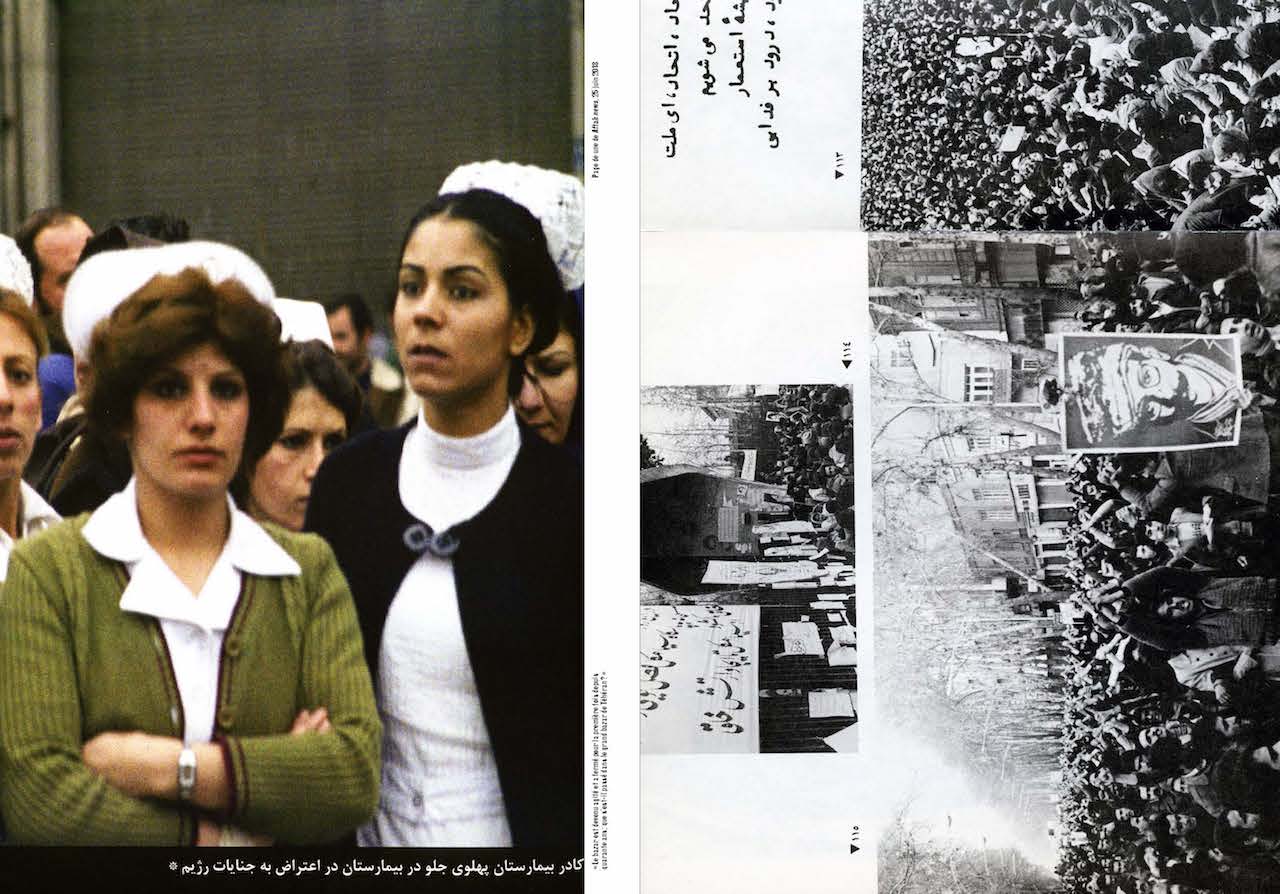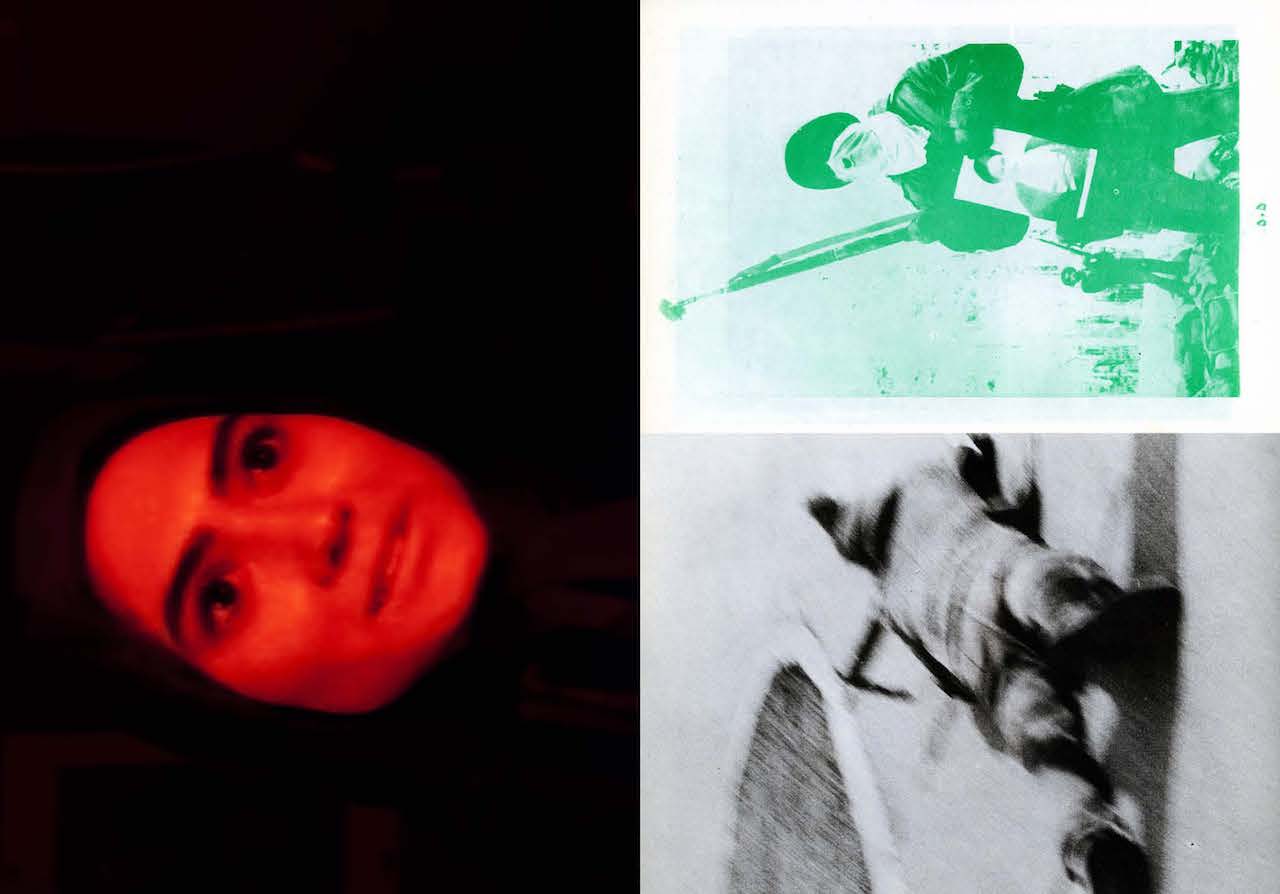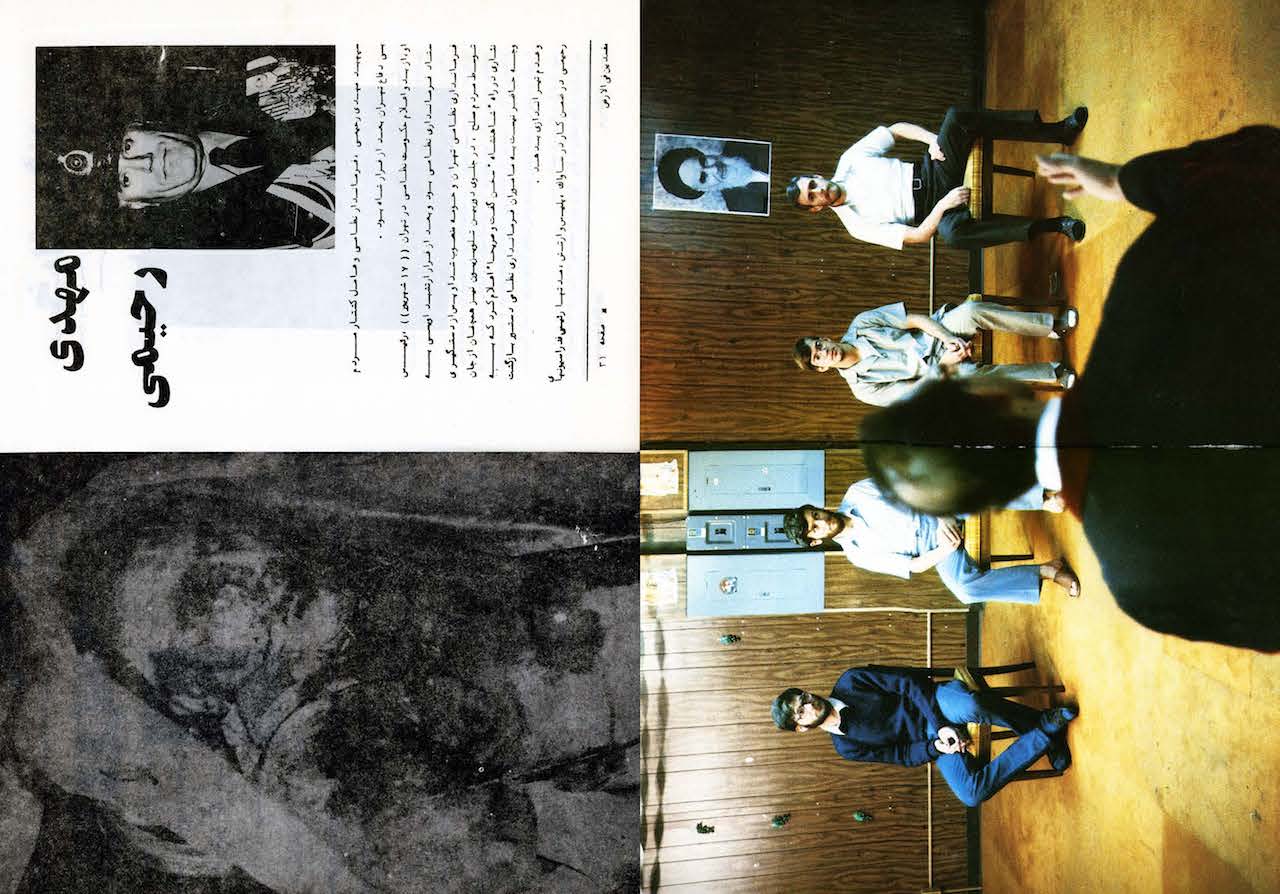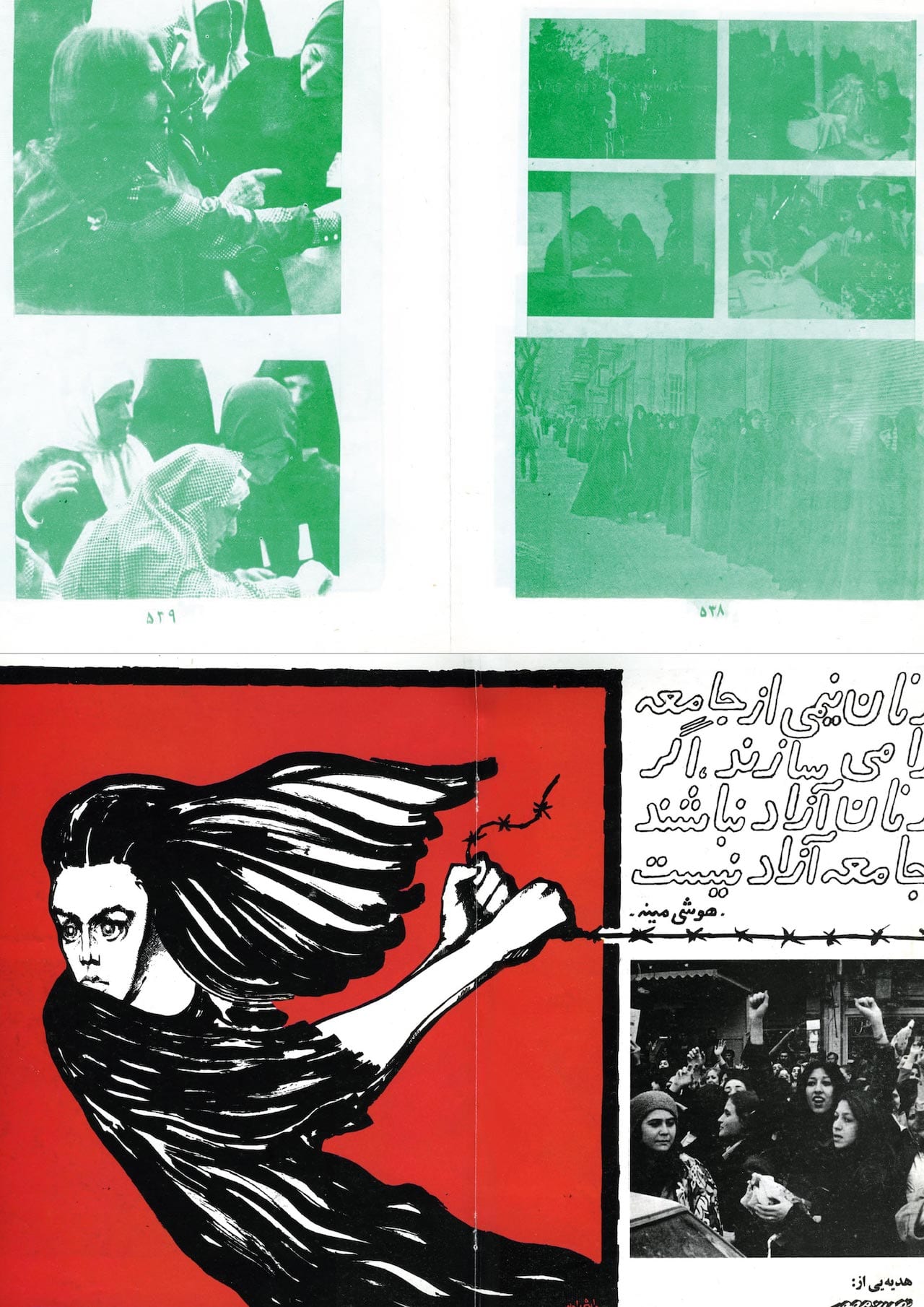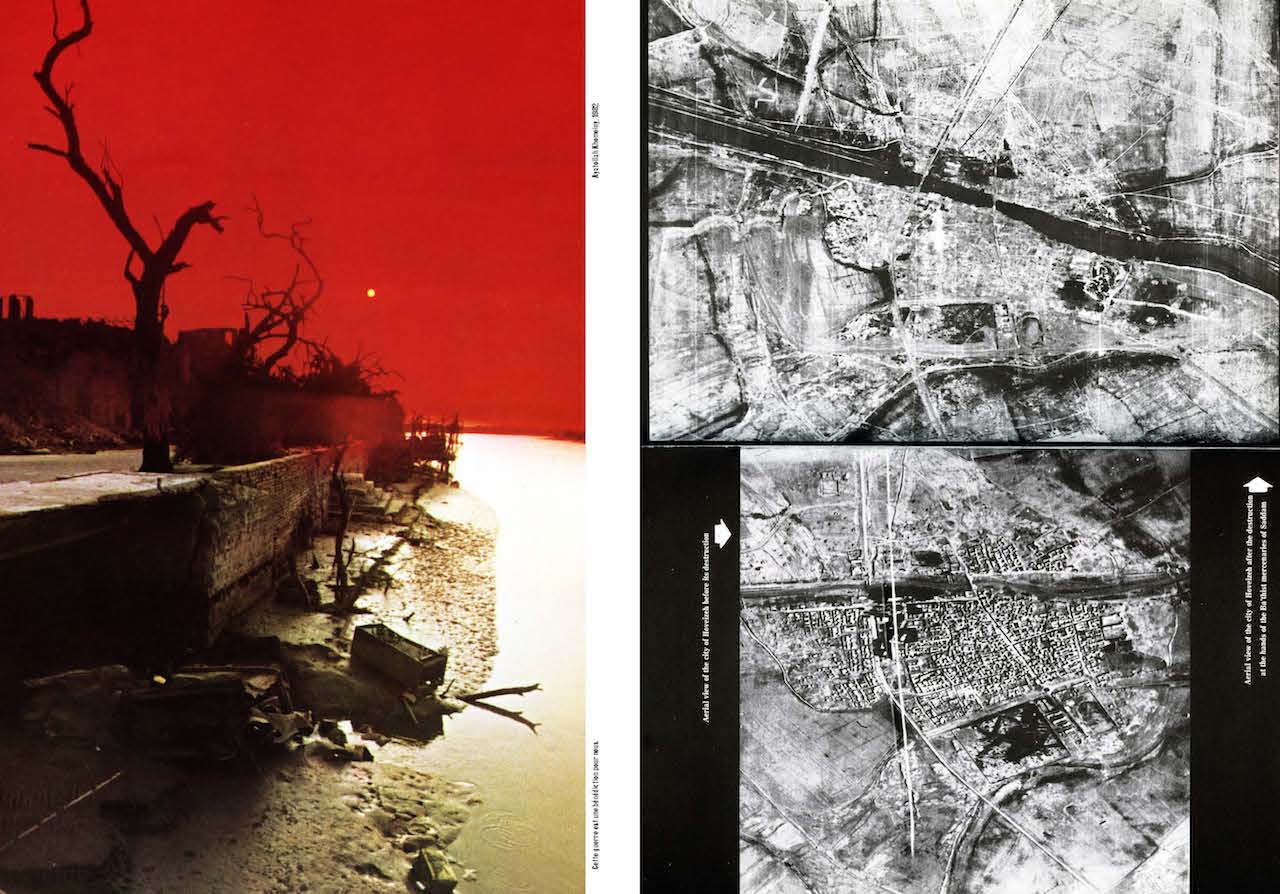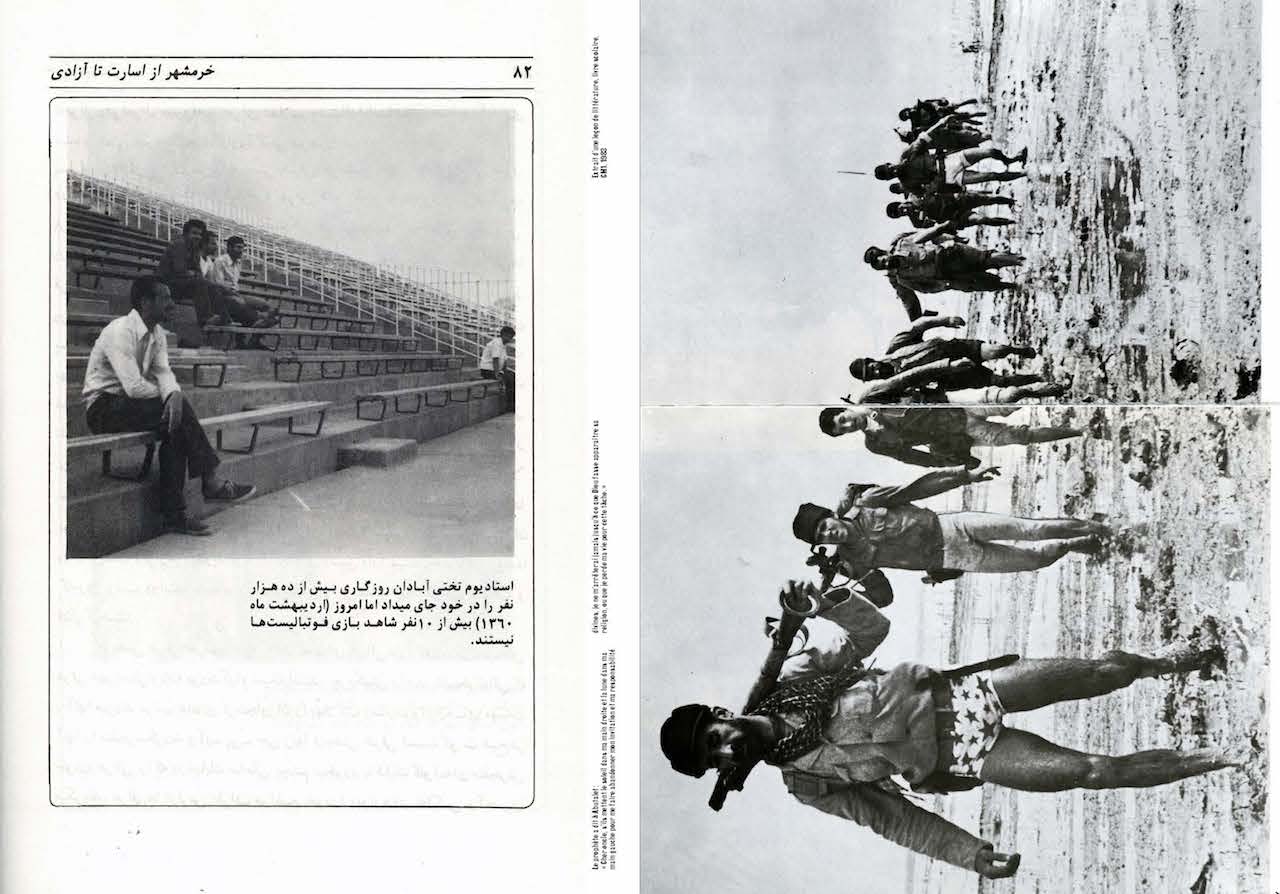“These documentary practices coalesced into a visual culture which, with its aptitude for capturing and transmitting collective emotions, became a tool for political propaganda,” write Hannah Darabi and Chowra Makaremi. They’re talking about the work produced in Iran in the years 1979-83, the period after the fall of the Shah and at the start of the Islamic government and a time in which freedom of speech briefly flourished, they argue, before descending into something darker.
“These few years stand out on their own in terms of the country’s publishing history,” adds Makaremi. “The creation and distribution of books would never be as unfettered as it was during this period. Nevertheless, at the same moment, books were also progressively becoming instruments of political propaganda and publishing became the laboratory in which to experiment with every form of dissemination of emotions, ideologies, and opinions. This propaganda operated through the production of texts, but also, and especially as of 1979, through visual and pictorial production.”
Darabi is a visual artist and collector who was born in 1981 in Tehran but is now based in Paris; her collection of Iranian photobooks make up the backbone of Le Bal’s latest exhibition, along with her own photographic “reconstructions”, creating using contemporary photographs of Tehran and archive images such as family snaps, press images, and postcards. Makaremi, a tenured researcher and a member of the National Center for Scientific Research (CNRS) in Paris, has “decrypted” the exhibition; in addition, Le Bal and Spector Books have worked with Darabi to create an accompanying photobook, with an introduction by Makaremi.
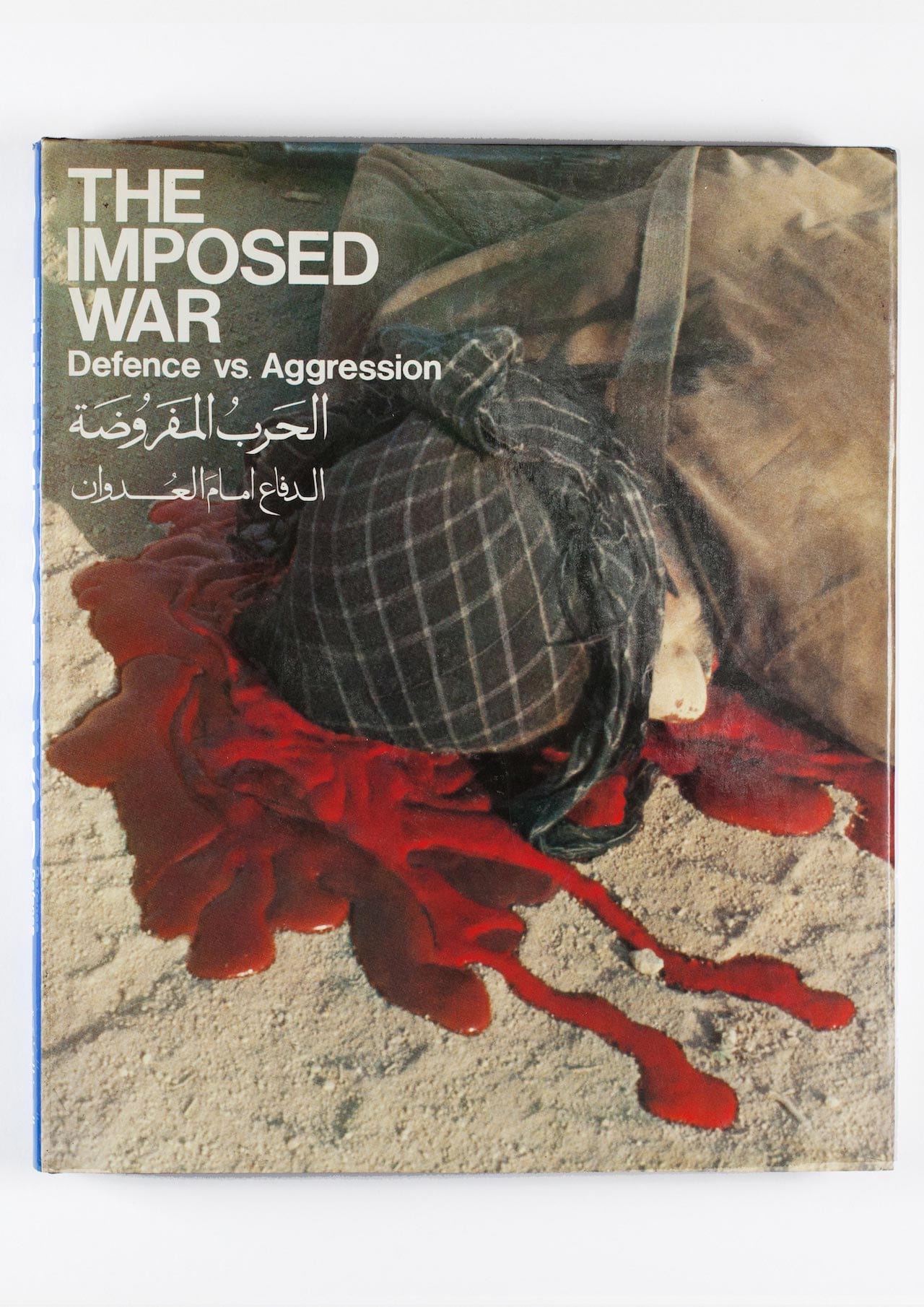
The exhibition and book are both titled Enghelab Street, A Revolution Through Books, Iran 1979-1983, referencing the avenue in Tehran known for its bookshops and publishing houses. “The street got the name Enghelab, which means “revolution” in Persian, after the events of 1979,” explains Darabi. The exhibition ends on 11 February – the 40th anniversary of the revolution – and Le Bal is marking the day with a conference co-ordinated by Makaremi, looking both at the Iranian experience and how it might translate into more recent events in countries such as Egypt and Syria.
“This was a moment of uncertainty, when the outcomes which are so obvious today (the imminent fall of the Shah, and the true nature of the upcoming Islamic Revolution) seemed unlikely without the benefit of hindsight,” says Makaremi. “It was a time when Iran became a proving ground in which new ways of articulating artistic, intellectual, and political activities were being tested. This profusion of anarchic activity broke all the editorial rules and was a response to censorship.
“The rudimentary means and amateurism into which the opposition was forced was a tangible affirmation of the stultifying political climate. It is in this context that opens up a tremendous arena for the development of documentary photography. These photography books published during that period, with a vigor that would soon be tamed or co-opted by the powers, provide valuable information on the motivations of a new political and aesthetic sensibility.”
Enghelab Street, A Revolution Through Books, Iran 1979-1983 is on show at Le Bal, Paris from 09 January – 11 February. The accompanying book will be published by both Le Bal and Spector Books at the same time. www.le-bal.fr/en/2018/12/hannah-darabi https://spectorbooks.com
